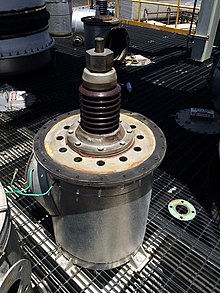Invention and Design of Electrostatic Precipitators
– Corona discharge used to remove particles from aerosol by Hohlfeld in 1824
– Commercialized almost a century later
– Frederick Gardner Cottrell patented the first electrostatic precipitator in 1907
– Basic design includes vertical wires and vertically oriented metal plates
– Air stream flows horizontally through the spaces between the wires and plates
– Negative voltage applied between wire and plate creates electric corona discharge
– Ionized particles are diverted towards the grounded plates
– Two-stage design minimizes ozone production and is used in shipboard engine rooms
Performance and Energy Efficiency
– Precipitator performance sensitive to electrical resistivity and particle size distribution
– Electrostatic precipitators apply energy only to the particulate matter being collected
– Very efficient in energy consumption compared to wet scrubbers
– Energy consumption is in the form of electricity
– Wet scrubbers apply energy directly to the flowing fluid medium
– Electrostatic precipitators minimize the impeding of gas flow through the unit
Dust Layer Resistance and Collection Efficiency
– Resistance affects electrical conditions in the dust layer
– High-resistance dust layers have difficulty conducting electrical charges
– Low-resistance dust layers do not adhere strongly to the collection plate
– Electrical conductivity of a bulk layer of particles depends on surface and volume factors
– Volume conduction depends on the composition and temperature of the particles
– Higher temperature regions above 500°F (260°C) control volume conduction
– Surface conduction occurs at temperatures below 450°F (230°C)
– ESPs work best under normal resistivity conditions
Conditioning Agents and Resistivity Modification
– Low resistivity particles are difficult to collect in an electrostatic precipitator
– Increasing the moisture content of the gas stream lowers particle resistivity
– Various conditioning agents, such as sulfuric acid and ammonia, can be used to reduce particle resistivity
– Sulfuric acid and/or sulfur trioxide can reduce particle resistivity through condensation and adsorption
– Ammonia modifies resistivity, increases ash cohesiveness, and enhances space charge effect
– Sodium compounds act as natural conditioners and resistivity modifiers
Applications and Variations of Electrostatic Precipitators
– ESPs are effective in controlling industrial particulate emissions, such as smoke from coal-fired electricity-generating utilities
– They are also used for salt cake collection in pulp mills and catalyst collection in oil refineries
– Electrostatic precipitators can be used to sample biological airborne particles for analysis
– Wet ESPs operate with air streams saturated with water vapor and are commonly used to remove liquid droplets
– Plate precipitators are marketed as air purifier devices or permanent furnace filter replacements and have advantages over technologies like HEPA filtration Source: https://en.wikipedia.org/wiki/Electrostatic_precipitator
This article has multiple issues. Please help improve it or discuss these issues on the talk page. (Learn how and when to remove these template messages)
|
An electrostatic precipitator (ESP) is a filterless device that removes fine particles, such as dust and smoke, from a flowing gas using the force of an induced electrostatic charge minimally impeding the flow of gases through the unit.



In contrast to wet scrubbers, which apply energy directly to the flowing fluid medium, an ESP applies energy only to the particulate matter being collected and therefore is very efficient in its consumption of energy (in the form of electricity).[citation needed]
